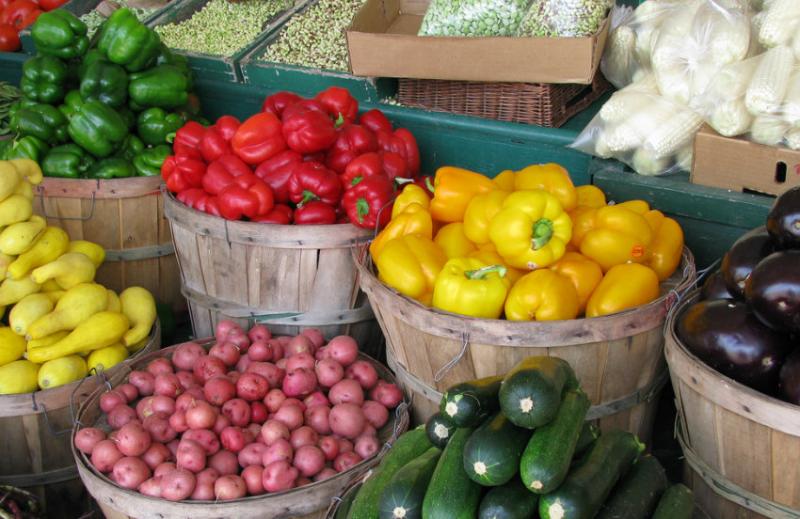Urban agriculture, the cultivating, distributing and processing food, in or close to a city, is a huge part of the “Green Revolution” and many feel, vital to feed the world. Innovations in urban growing allow almost any space to be a farm: Rooftops, parking lots, vacant property, warehouses and even shipping containers can be utilized for growing cash crops. The types and methods used by urban farmers is growing almost as fast as the products these metro farms produce.
It seems the key word for growing quantity in a relatively small space is “vertical”. Even with a limited floor plan, vertical growing systems can grow an impressive amount per square foot. Using hydroponic, aeroponic, and aquaponic methods, stacking towers, zip grow systems, rack stacks and green walls are all seen as viable methods to grow food. These systems can be huge elaborate and high tech greenhouse operations (see Gotham Greens), small farm to table methods, allowing chefs to offer only the freshest herbs and greens that they grow themselves and many options in between.
Take a look some these leaders in the Urban Agriculture Arena
The original home of the “Upstart Farmer” is Bright Agrotech, creator not only of the Zip Grow Tower, but also many new upstart farmers who believe in their methods. Challenged by wind and 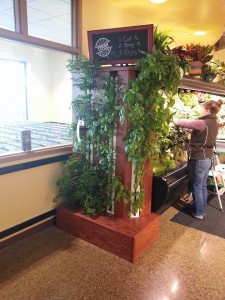 weather in their home state of Wyoming, The Zip Grow Tower, brain child of Dr Nate Storey, is the key to the BrightAgrotech system which is based on aquaponics and hydroponics. BrightAgro is a catalyst for others to join the movement providing the facts, figures, statistics and more to help those who may be considering an urban farm of their own. They also offer a unique grocery store “farm.” “The Spring” is delivered to stores ready for harvest by consumers. A reservoir keeps the greens and herbs growing strong while shoppers can literally cut their own produce right from the towers. Once a tower’s harvest has been depleted, it’s replaced with new live towers.
weather in their home state of Wyoming, The Zip Grow Tower, brain child of Dr Nate Storey, is the key to the BrightAgrotech system which is based on aquaponics and hydroponics. BrightAgro is a catalyst for others to join the movement providing the facts, figures, statistics and more to help those who may be considering an urban farm of their own. They also offer a unique grocery store “farm.” “The Spring” is delivered to stores ready for harvest by consumers. A reservoir keeps the greens and herbs growing strong while shoppers can literally cut their own produce right from the towers. Once a tower’s harvest has been depleted, it’s replaced with new live towers.
Vertigrow high density EPS growing systems were created by Tim Carpenter who consulted with Disney on many of the hydroponic growing systems used at Epcot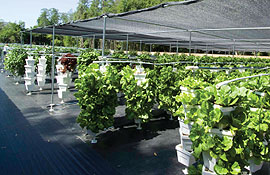 . The Vertigrow towers are essentially offset square stacking pots filled with growing media, planted in 4 corners and irrigated with a nutrient rich formula that creates towers of healthy produce. The vertigrow towers are basically infinitely expandable and some farms using the system can be very large, quadrupling (at least) the production of land based growing operations. The system is used around the world. The Vertigrow system can be installed in a greenhouse or on open land and is a popular home farm to table option.
. The Vertigrow towers are essentially offset square stacking pots filled with growing media, planted in 4 corners and irrigated with a nutrient rich formula that creates towers of healthy produce. The vertigrow towers are basically infinitely expandable and some farms using the system can be very large, quadrupling (at least) the production of land based growing operations. The system is used around the world. The Vertigrow system can be installed in a greenhouse or on open land and is a popular home farm to table option.
A newcomer on the urban farming scene is Sunstate Organics who has developed their own unique vertical design they call the “GrowPol”. Instead of using stackable pots with planted areas, they use individual geotextile grow bags that hang from the tower. Each pot is individually irrigated as well, so lower plantings to not have to rely on drip down irrigation. GrowPol inventor Brian Donnelly says the system is adaptable to hydroponics, aquaponics or organic growing. You can see the various configurations available at their website. Brian also manufactures automatic compost equipment that you can see on the Sunstate Organics website as well
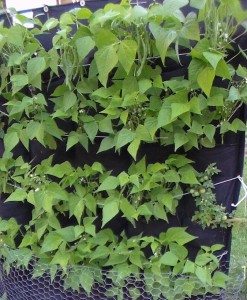 Sunny walls and fences provide smaller farmers with options to grow right on a wall, fence or stand. Joe Venlente of the Vertical Eco Garden, nicknamed “The VEG” has a patented vertical system that utilizes geotextile fabric tubes filled with coir growing media. Pockets attached to the front exterior of the tube are planted with the crop. The roots of the plants grow through the geotextile material and into the tube giving them structure to hold onto. It’s backed by a heavy marine vinyl which gives it structure to hang from sturdy grommets.
Sunny walls and fences provide smaller farmers with options to grow right on a wall, fence or stand. Joe Venlente of the Vertical Eco Garden, nicknamed “The VEG” has a patented vertical system that utilizes geotextile fabric tubes filled with coir growing media. Pockets attached to the front exterior of the tube are planted with the crop. The roots of the plants grow through the geotextile material and into the tube giving them structure to hold onto. It’s backed by a heavy marine vinyl which gives it structure to hang from sturdy grommets.
Aeroponic towers can grow a tremendous amount of produce in a small space. The Aero company, founded by Sam Stoltzfus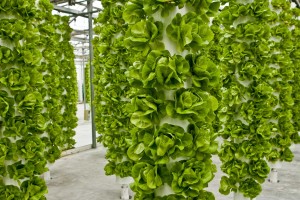 and Frank Fendler provides aeroponic towers for both commercial and home growers. By “cuttiing out the dirt” they feed plant roots directly with nutrients and lots of oxygen which creates extremely fast growing produce. Due to the materials they use to manufacture their products, they can create a number of aesthetically pleasing architectural designs that would look great just about anywhere they are placed. If growing for the masses is the aim, they’ve got that covered too. .
and Frank Fendler provides aeroponic towers for both commercial and home growers. By “cuttiing out the dirt” they feed plant roots directly with nutrients and lots of oxygen which creates extremely fast growing produce. Due to the materials they use to manufacture their products, they can create a number of aesthetically pleasing architectural designs that would look great just about anywhere they are placed. If growing for the masses is the aim, they’ve got that covered too. .
If you’ve been toying with the thought of starting an urban farming operation, or just want to create delicious healthy produce at home, the companies listed above should give you a good start in your research. All are viable options to actually supply fresh produce to your local markets, your local foodies or growing your own at home.

